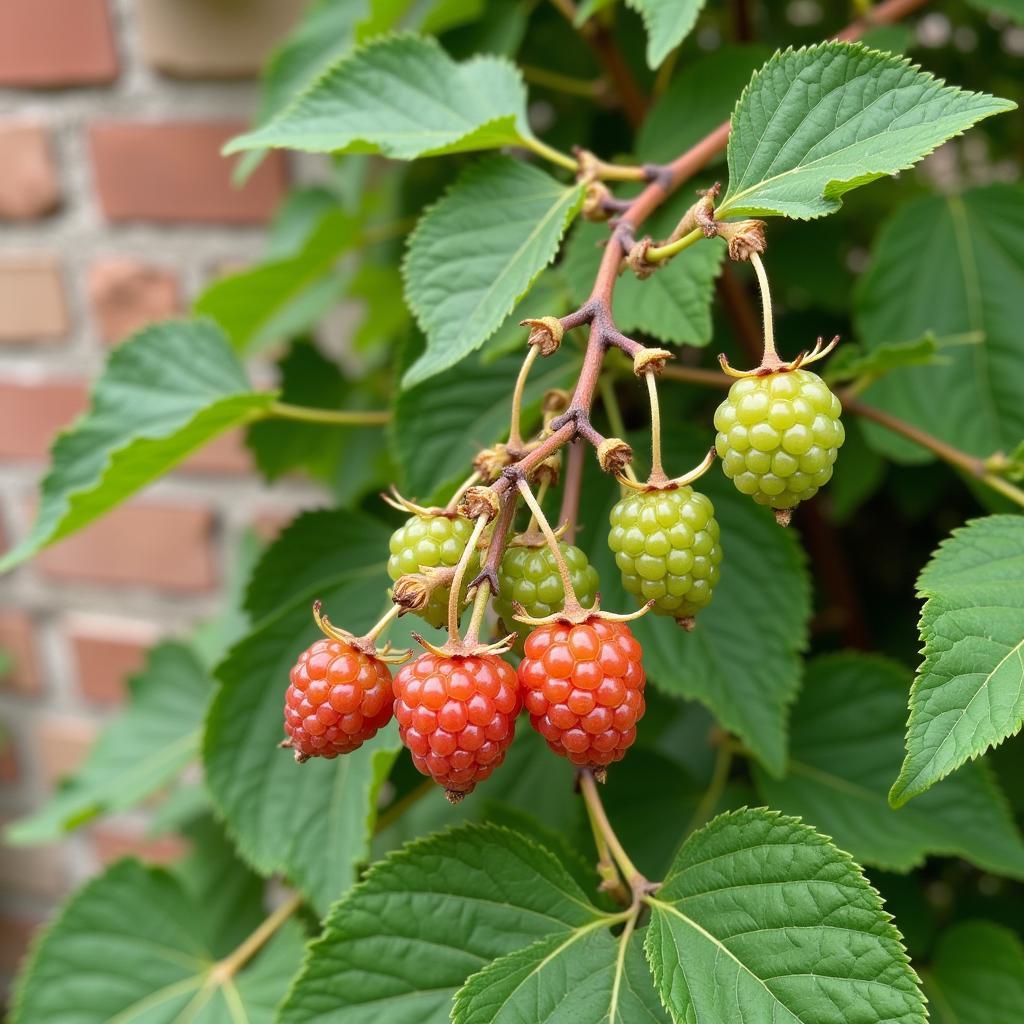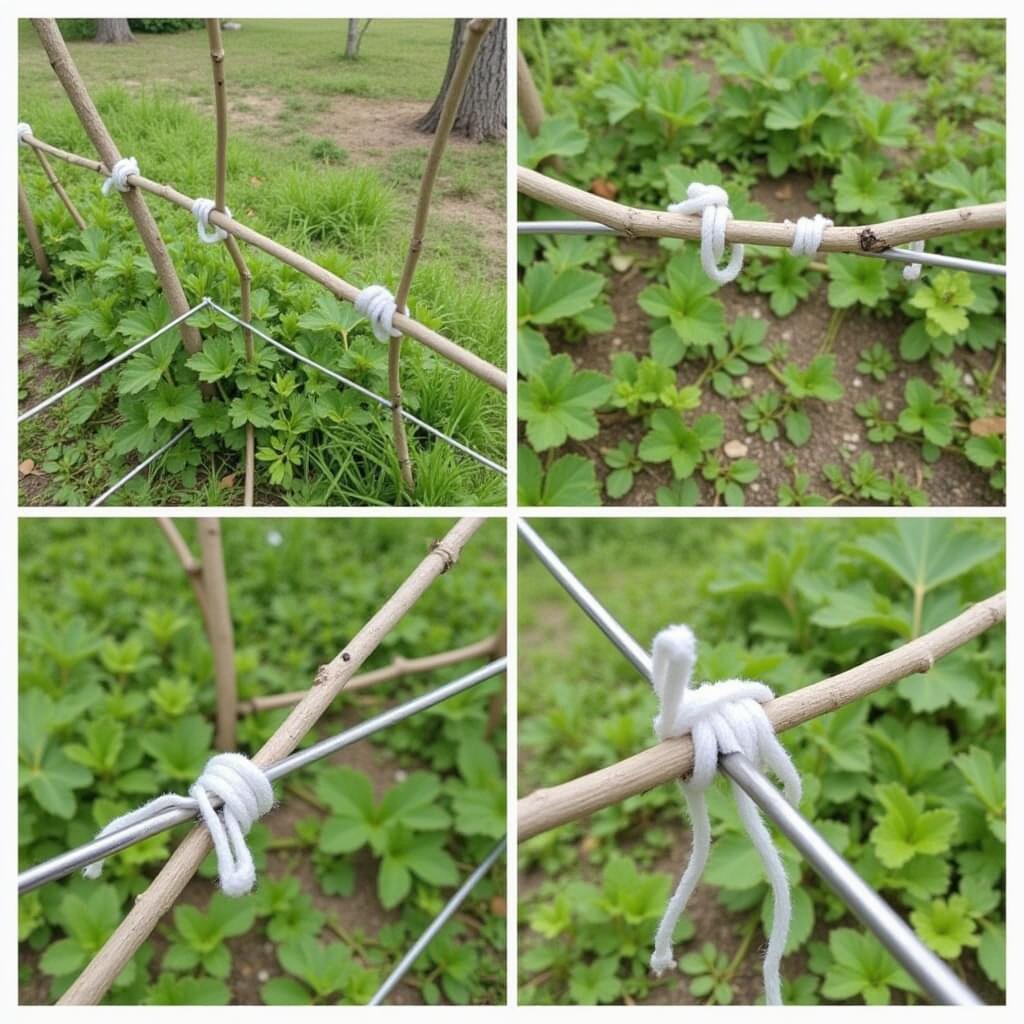Fan Training Gooseberries is a technique that involves training the branches of gooseberry bushes to grow in a specific shape, typically a fan. This method offers several benefits for both the plant and the gardener, including improved air circulation, increased sunlight exposure, and easier harvesting.
Understanding the Benefits of Fan Training Gooseberries
 Fan-trained gooseberry bush with ripe berries
Fan-trained gooseberry bush with ripe berries
Fan training gooseberries provides numerous advantages. By spreading the branches, air can circulate more freely, reducing the risk of fungal diseases that thrive in humid conditions. Additionally, increased sunlight penetration promotes better fruit development and ripening, resulting in higher yields of larger, sweeter berries. Moreover, the organized structure makes it significantly easier to harvest the fruit without getting pricked by the thorns.
Step-by-Step Guide to Fan Training Gooseberries
1. Choosing the Right Gooseberry Variety
Not all gooseberry varieties are suitable for fan training. It’s best to select vigorous, upright cultivars that produce long, flexible branches. Some recommended varieties include ‘Invicta,’ ‘Hinnonmaki Red,’ and ‘Leveller.’
2. Planting and Initial Pruning
Plant your gooseberry bush in a sunny location with well-drained soil. After planting, prune back all shoots to about 4-6 inches above ground level. This encourages the development of strong, outward-growing branches.
3. Building the Framework
During the first two years, select 4-6 strong shoots to form the main branches of your fan. Tie these shoots to horizontal wires or a trellis system, gently bending them outwards to create the desired fan shape.
 Training young gooseberry branches on a wire frame
Training young gooseberry branches on a wire frame
4. Maintaining the Fan Shape
Regular pruning is crucial to maintain the fan shape and encourage fruit production. In winter, remove any dead, diseased, or crossing branches. Shorten side shoots to two or three buds to promote fruit spurs.
5. Ongoing Care and Harvesting
Provide regular watering, especially during dry periods. Apply a balanced fertilizer in spring to support growth and fruit development. Gooseberries are typically ready for harvest in mid to late summer.
Tips for Successful Fan Training
- Choose a sturdy support system: Use strong wires or a trellis that can withstand the weight of the mature bush.
- Be patient: Fan training takes time and consistent effort. It may take a few years for your gooseberry bush to reach its full potential.
- Protect from pests and diseases: Monitor your plants regularly for any signs of pests or diseases and take appropriate measures to control them.
Expert Insights
“Fan training gooseberries not only enhances their aesthetic appeal but also improves their overall health and productivity,” says renowned horticulturist, Emily Carter. “By optimizing sunlight exposure and air circulation, you create an environment that minimizes disease pressure and maximizes fruit yield.”
Conclusion
Fan training gooseberries is a rewarding technique that offers numerous benefits. By following the steps outlined in this guide, you can create a beautiful and productive gooseberry bush that provides an abundance of delicious fruit for years to come.


